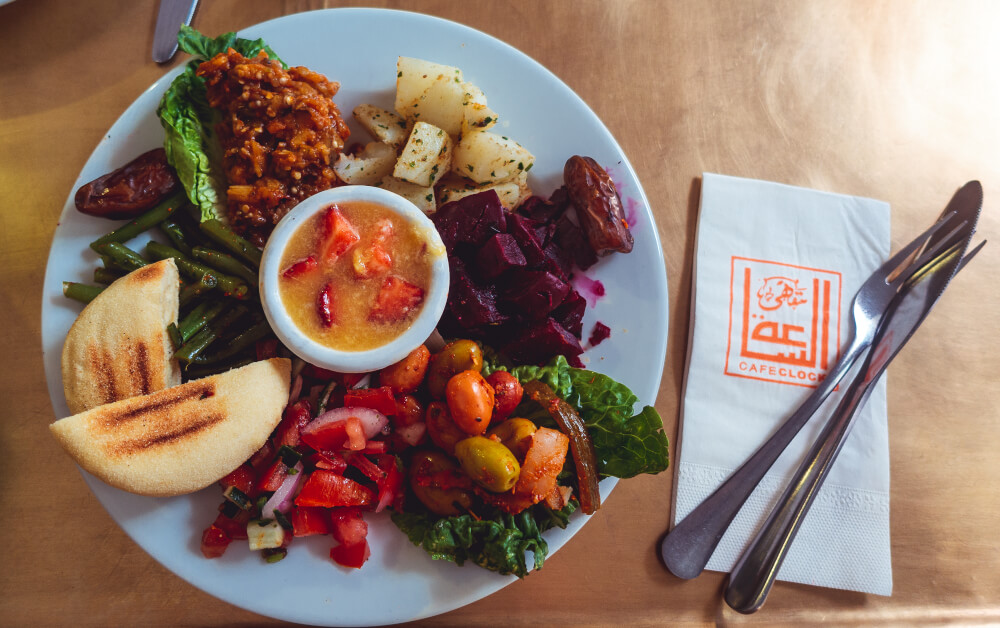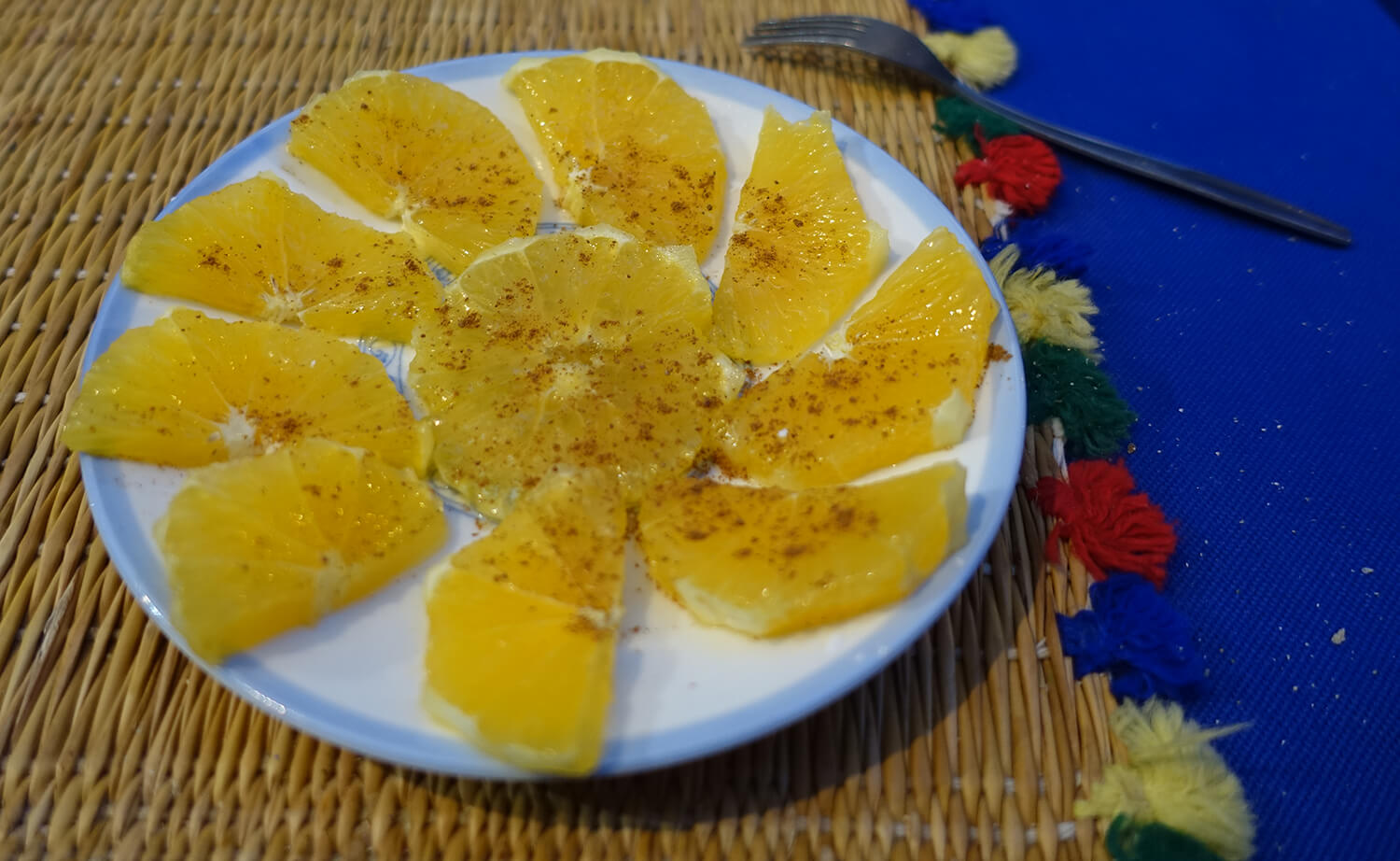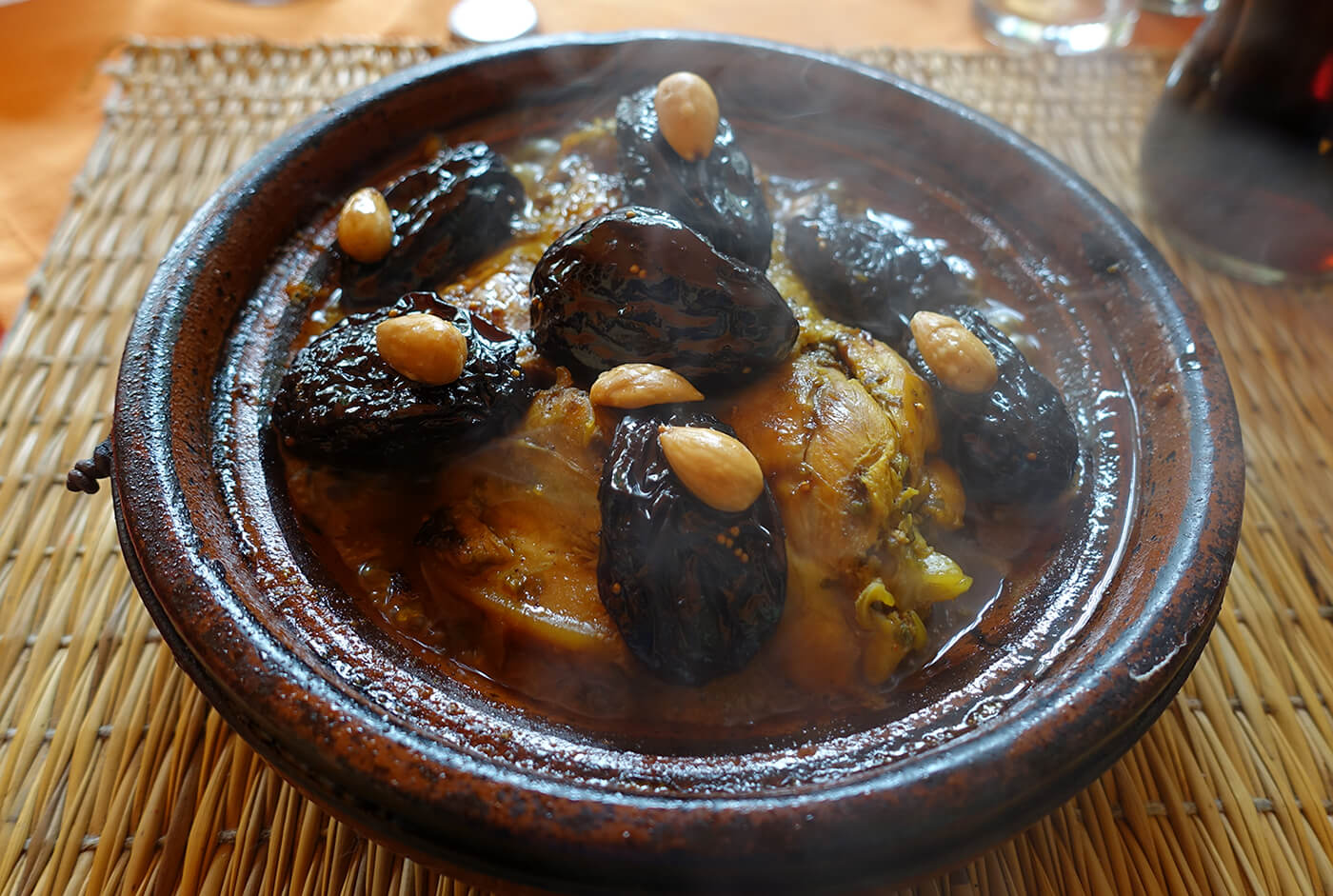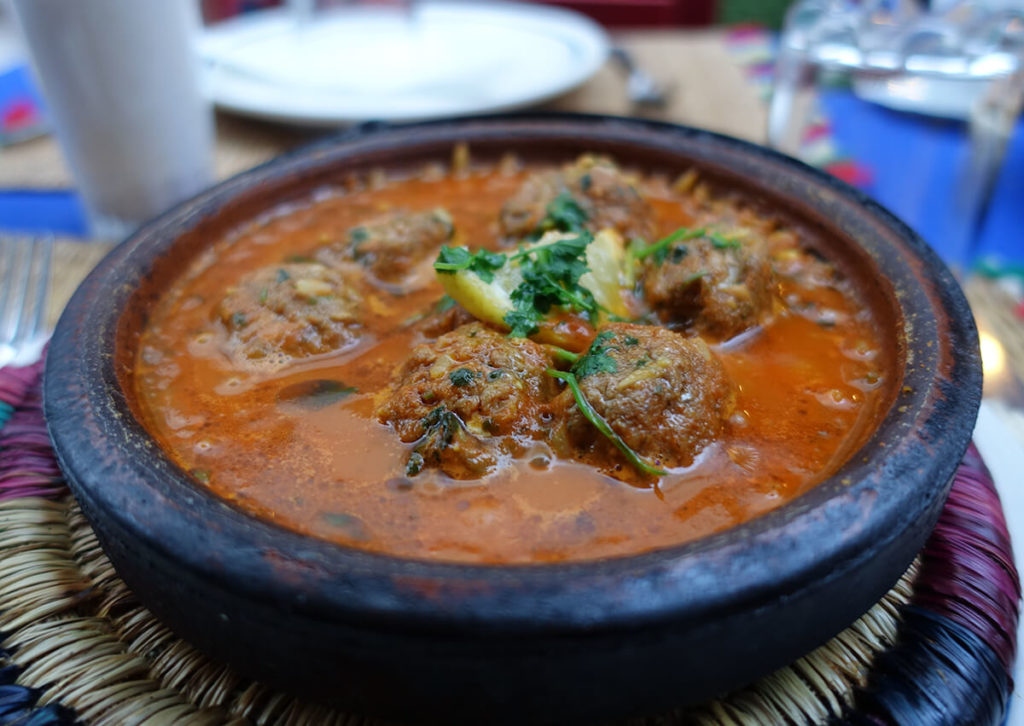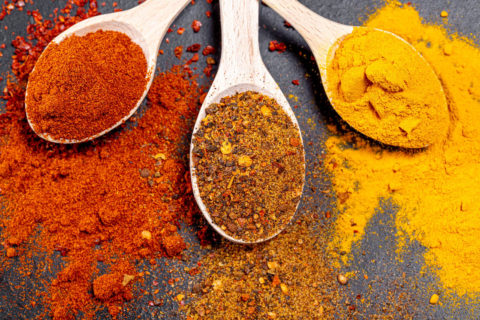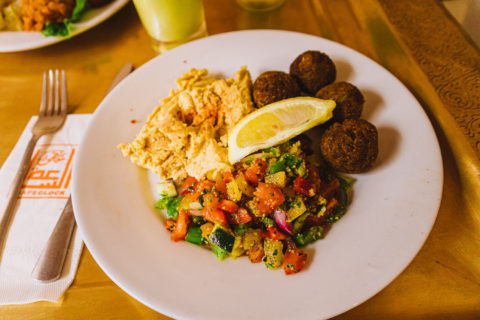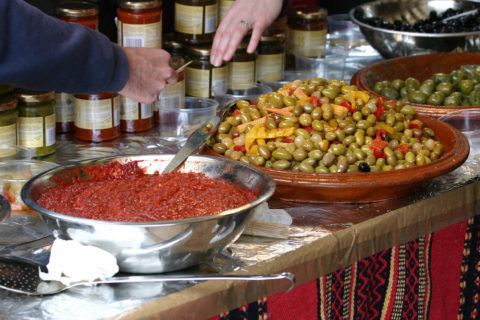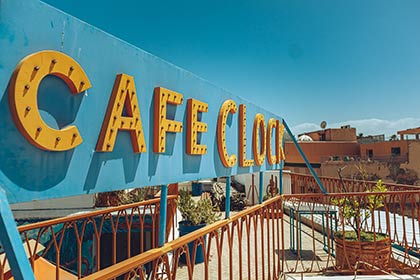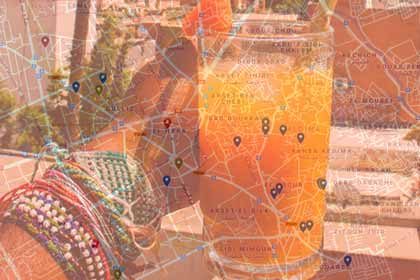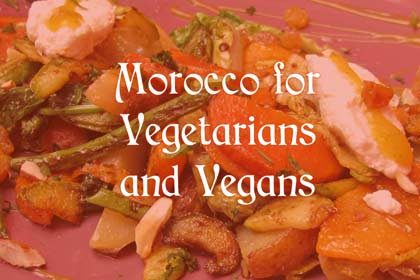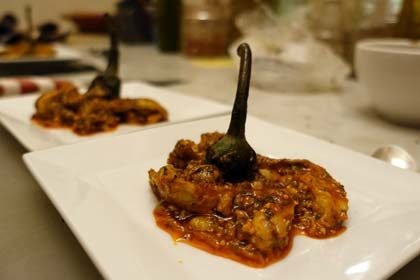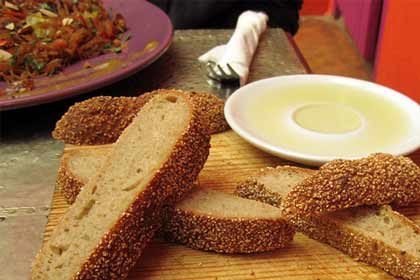Food in Morocco is diverse and fascinating, influenced by the Mediterranean and Eastern Arab regions. Fresh, sun-kissed fruits and vegetables such as peppers, tomatoes, eggplants, oranges, strawberries, and apricots dominate the vibrant markets and, later, the laden plates. This article delves into the intricacies of Moroccan cuisine and its culinary specialties.
A Quick Overview of Moroccan Food
A Moroccan meal starts with delightful appetizers like eggplant and pepper pastes, grated carrots with orange juice, chickpea puree, and various salads. For example, the “Salad Marocaine” comprises tomatoes, cucumbers, onions, potatoes, beets, and olives. Flatbread, olives, harissa, or olive oil accompany it.
Main courses span from seasoned lamb skewers to the national dish, Couscous, to various Tajines served in distinctive cone-shaped clay pots. Desserts complete the feast, featuring oranges, cinnamon, fresh fruits, or traditional pastries.
Moroccan cuisine gains its distinctive flavor from spices like cumin, cinnamon, coriander, ginger, and saffron. Each spice shop crafts its unique blend, Ras el Hanout, often comprising over 30 different spices—a sought-after souvenir for cooking enthusiasts.
Herbs like coriander, mint, flat parsley, thyme, wormwood, and bay leaves further enhance the characteristic taste of Moroccan cuisine. With its nutty flavor, locally produced olive oil and precious Argan oil are other defining ingredients.
In the modern patisseries of the new towns, freshly baked temptations are hard to resist. In the small bakeries of the medinas, you’ll find delicious sesame, almond, and honey pastries at affordable prices.
And then there’s the famous mint tea, Morocco’s national drink. The Moroccan population practically consumes the sweet green tea infusion on every occasion, and it plays an almost existential role. But more on that later. First, let’s take a closer look at the diversity of Moroccan cuisine.
Typical Food in Morocco
If you’re creating a culinary bucket list for your vacation in Morocco and want to check off must-try dishes, the following Moroccan delicacies should undoubtedly be on it. These specialties are prepared throughout the country, though you might encounter Tanjia exclusively in Marrakech.
Tajine: Moroccan Specialty from the Clay Pot
Similar to the way “Paella” refers to both the dish and the pan it’s cooked in, the name “Tajine” (also spelled “Tagine”) in Morocco refers to both the clay pot and the delectable dish prepared within it. This typical Moroccan dish involves marinated meat stacked in the center of a clay pot, surrounded by arranged vegetables. The ingredients are generously seasoned and covered with a pointed or semi-circular lid. They place the Tajine on a charcoal stove for an extended period. The heavy lid traps the steam inside, allowing the ingredients to simmer in their juices, preserving the rich flavors.
Classic Tajines bring together meat or fish, seasonal vegetables, fruits, herbs, and spices. Standard components include onions, potatoes, bell peppers, and carrots, with the occasional addition of pumpkin, cabbage, artichokes, eggplant, olives, and zucchini. Traditionally, chicken might be cooked with green olives and preserved lemons in brine. Other popular variations include lamb or beef with prunes and roasted almonds. People typically enjoy Tajine with Moroccan flatbread.
There are numerous variations of this delicious Moroccan dish. However, some tourist restaurants may precook their Tajines in pressure cookers rather than slow-cooking them over charcoal fires. Just before serving, they transfer the dish into the tajine pots. As a result, these dishes lack the authentic flavor of the traditional slow-cooking method.
Prices for Tajines can vary between 25 and 120 DH. You will find the most authentic and budget-friendly options outside cities in simple restaurants along the highways. You can identify good spots by the Tajines placed on the broad charcoal stoves in front of the restaurants. Often, a tomato placed on the lid indicates that the dish is ready to be served.
Couscous, the National Dish
Indeed, I cannot overlook Couscous. Traditionally, families serve the most renowned Moroccan dish after Friday prayers.
Initially developed by the Berbers, Couscous consists of steamed hard wheat semolina over a lamb, beef, or chicken stew. It is artfully piled on a plate with vegetables and meat, creating an impressive mountain. Typically, meat, often lamb, beef, chicken, or fish, crowns the top. But you can also find Couscous in Morocco prepared as a sweet dish by adding butter, sugar, cinnamon, almonds, and dried fruits.
The traditional way to enjoy Couscous involves eating with the hands, explicitly using only the right hand, as the left is considered unclean. To eat, you shape Couscous, vegetables, and meat into small balls, pushing them into your mouth with the help of your thumb.
In simpler restaurants, you can expect prices for a couscous dish to range between 40 and 60 DH. However, the Couscous served in conventional restaurants in Morocco often lacks excitement in flavor. The finest variations of this national dish await you at private invitations, homestays, and trendy restaurants in larger cities.
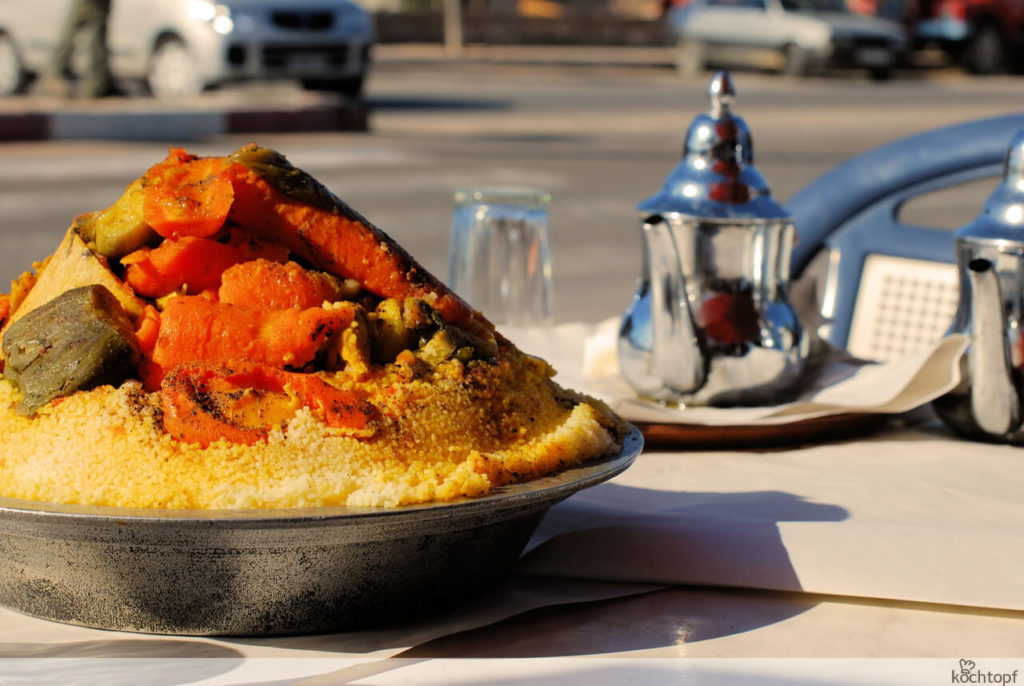
Brochettes, street food from the grill
Brochettes, delicious grilled skewers featuring tender lamb, beef, or chicken, are predominantly found in simple street-side restaurants and food stalls. You commonly get the grilled skewers with a fresh “Salade Marocaine” and bread (Khubz) or fries.
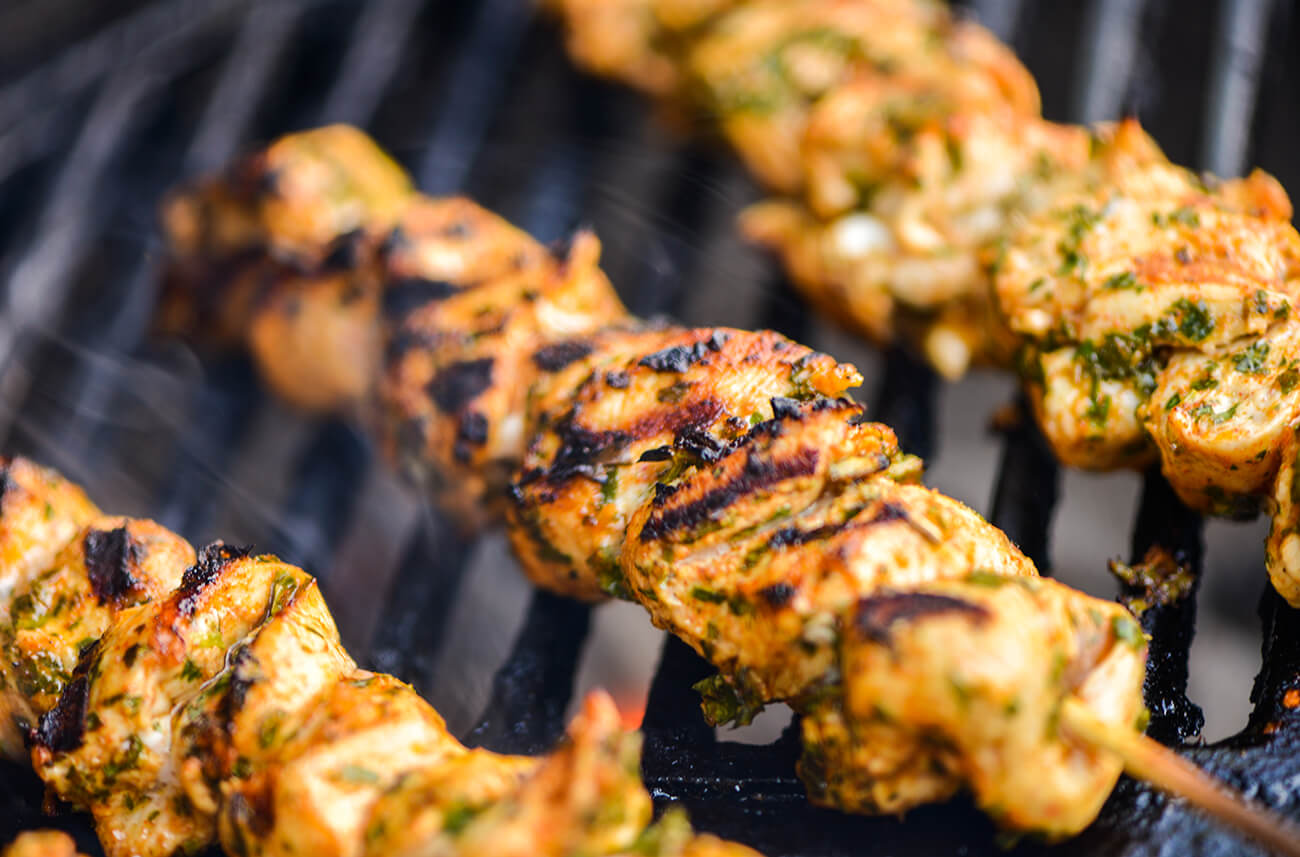
Kefta, a typical Moroccan dish
This Moroccan delicacy is finely seasoned meatballs or sausages, often crafted from spiced lamb mince. Preparation involves either searing in oil or grilling. Along the Atlantic coast, Kefta made from Sardines is common. This culinary delight is widely spread in Arab cuisine, with various variations throughout the region from the Maghreb to the Middle East.
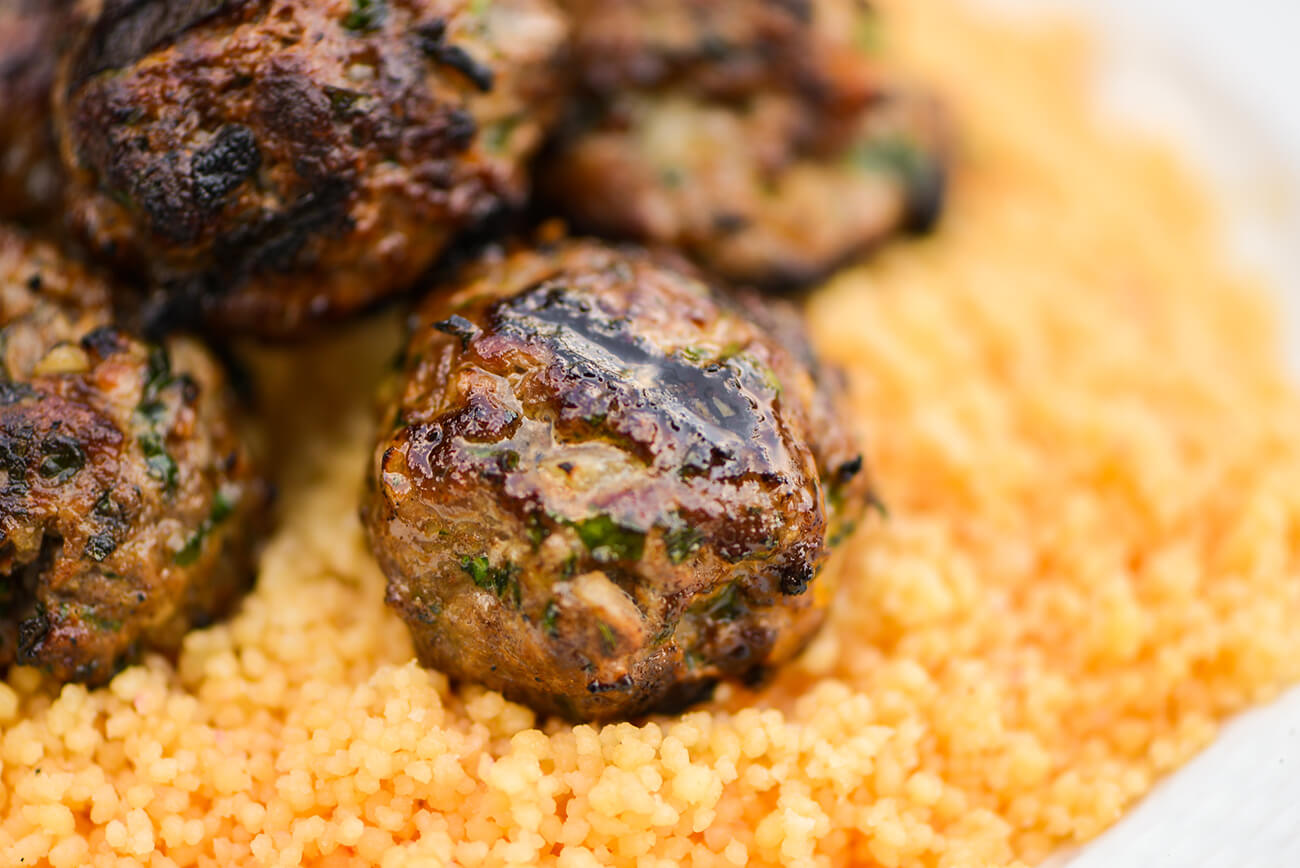
Merguez, the Spicy Lamb Sausages
Merguez sausages, distinguished by their reddish hue, are grilled or fried, similar to our bratwursts. These famous spicy lamb sausages are everywhere in small restaurants or street food stalls. Merguez sausages are often wrapped in flatbread and served directly from the grill. Prices vary depending on the location, ranging from 7-20 DH per serving. Ensure that the sausages are thoroughly cooked before indulging.
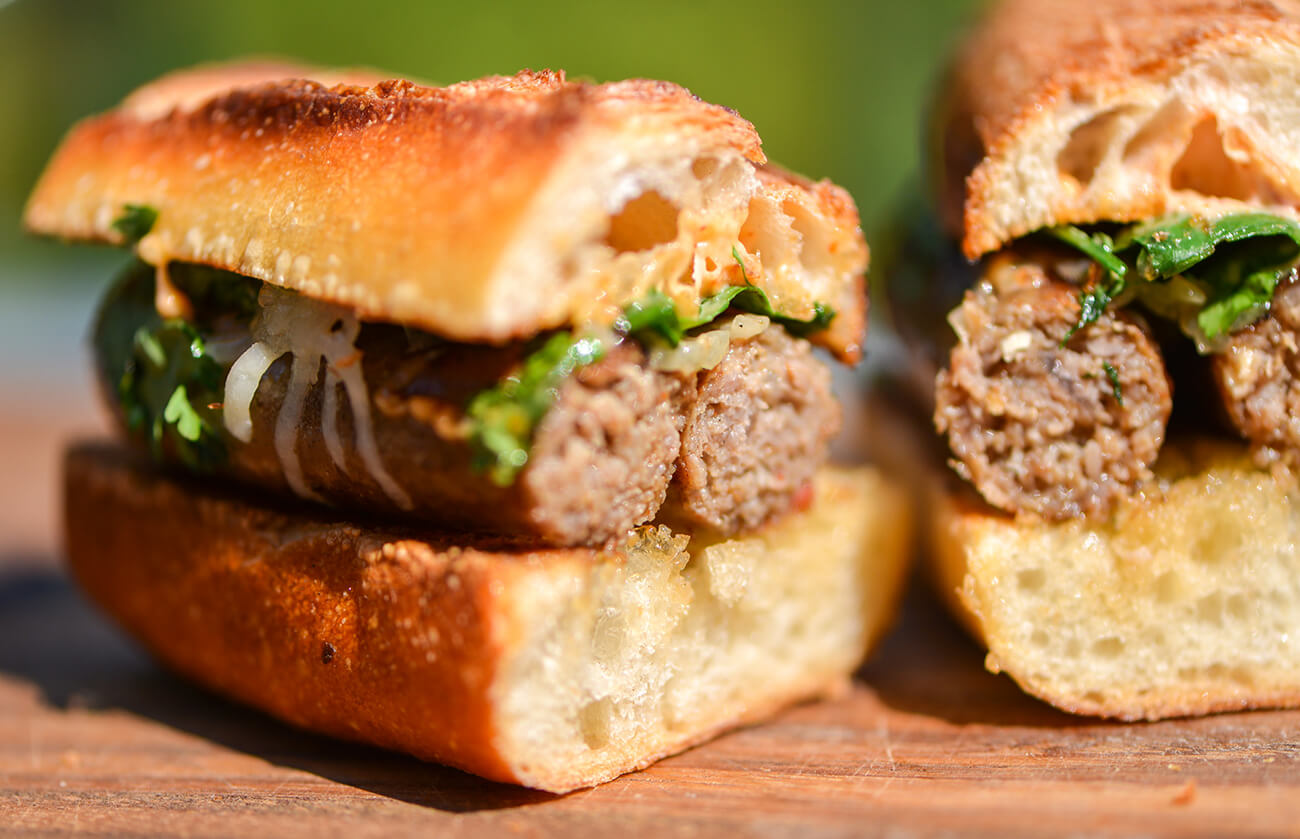
Omelette — Breakfast and Vegetarian Snack
A delicious snack or hearty breakfast option is an omelet with cheese (Omelette au fromage) or tomato slices (Omelette au tomates). The prices for an omelet in Morocco rarely exceed the mark of 15-20 DH.
The Berber Omelet is more flavorful and nutritious than a regular omelet, prepared with even more vegetables. A generous portion for about four people in a large Tajine costs approximately 35-50 DH.
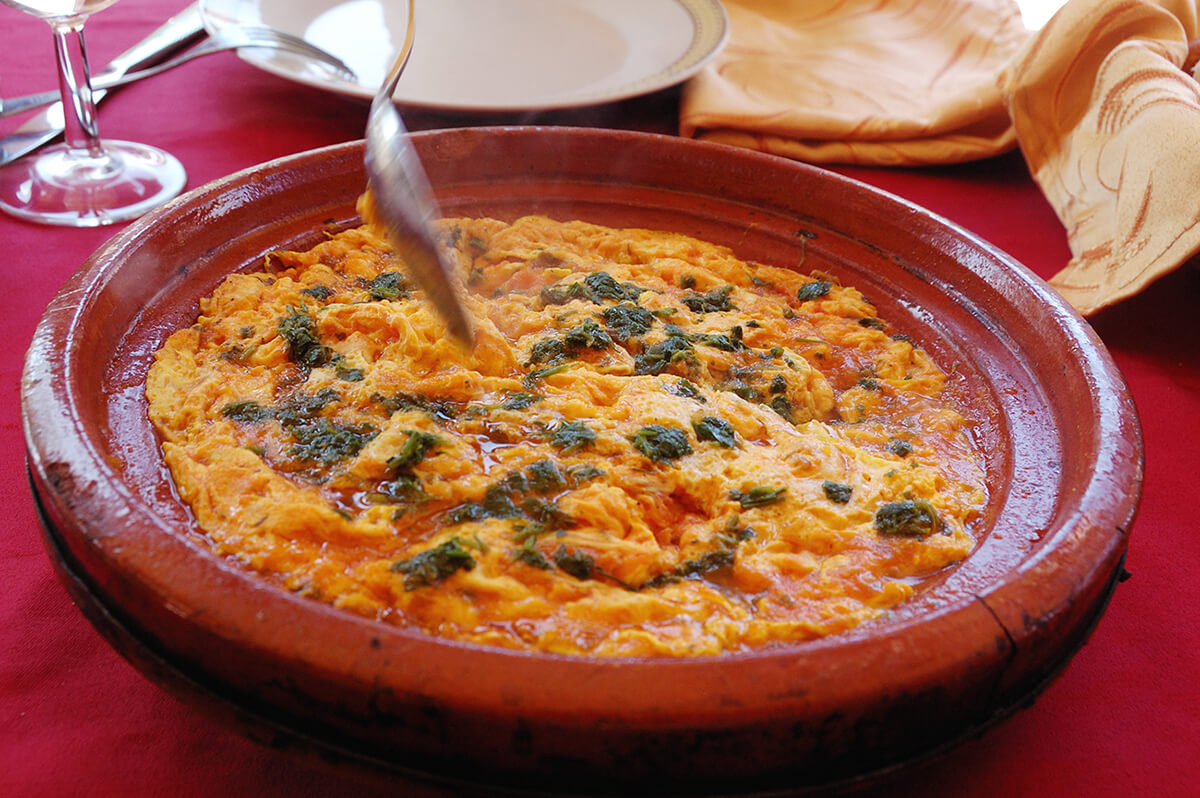
Briouat, the Tempting Bite for In-Between
A popular appetizer is the delicious Briouats, small spring roll-like packets, or triangular cushions. These can be prepared with various fillings, such as minced lamb with mint, shrimp, vegetables, or cheese. For those with a sweet tooth, there are also Briouats with almonds. Many enjoy this sweet delicacy during Ramadan as part of the iftar. A small portion of Briouats is typically available for 40-70 DH.
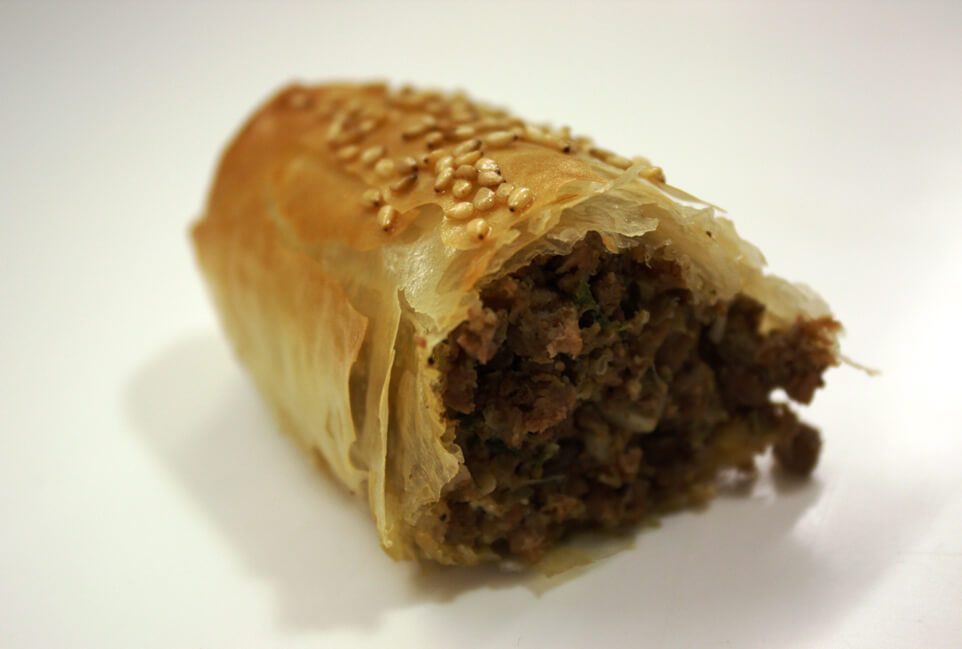
Zaalouk, the Special Delight from Morocco’s Cuisine
Zaalouk is a famous Moroccan dish with countless preparation styles and preferences. However, the basic ingredients are usually the same: eggplants, tomatoes, garlic, fresh parsley, coriander, cumin, paprika, and cold-pressed olive oil.
For a light lunch with flatbread or as a delightful side to a meal, Zaalouk is the ideal choice. The tomato-eggplant paste also makes a great accompaniment to tapas or serves well for a hearty second breakfast.
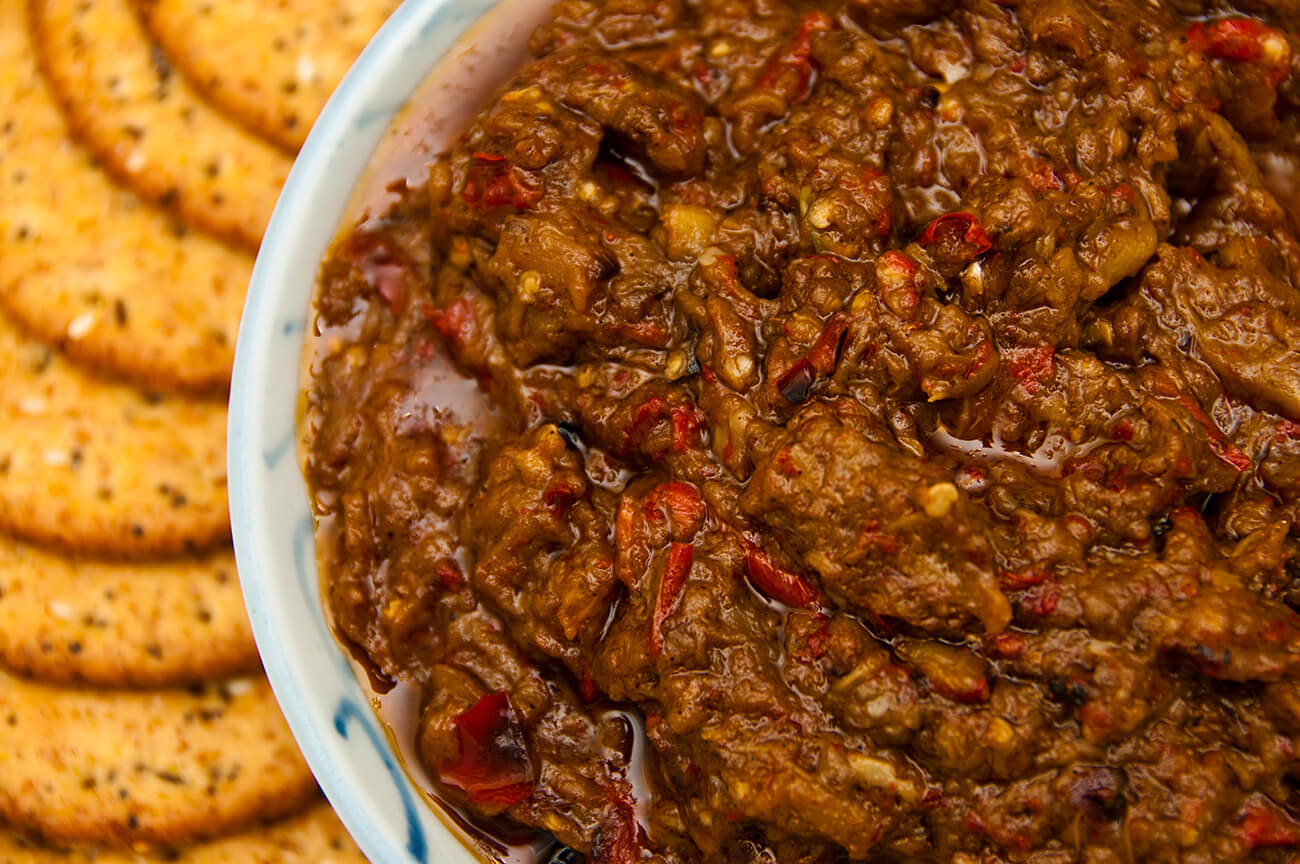
Harira, the Classic
The widely enjoyed Harira is perhaps the most straightforward dish in Morocco. This extraordinarily flavorful and nourishing soup is everywhere in street food stalls or simple restaurants. The prices for a serving of Harira are very low, often available for just 3 DH. Bread, dates, or sweet pastries traditionally accompany this Moroccan specialty.
Harira is particularly in demand during the fasting month of Ramadan, as it serves as the first meal when breaking the fast after sunset.
The recipe and preparation of this Moroccan dish vary from region to region. However, the aromatic soup usually consists of lamb, onions, chickpeas, lentils, chopped tomatoes, fresh herbs, and oriental spices. Harira is a popular dish throughout the Arab world, particularly in winter when fresh vegetables are less abundant.
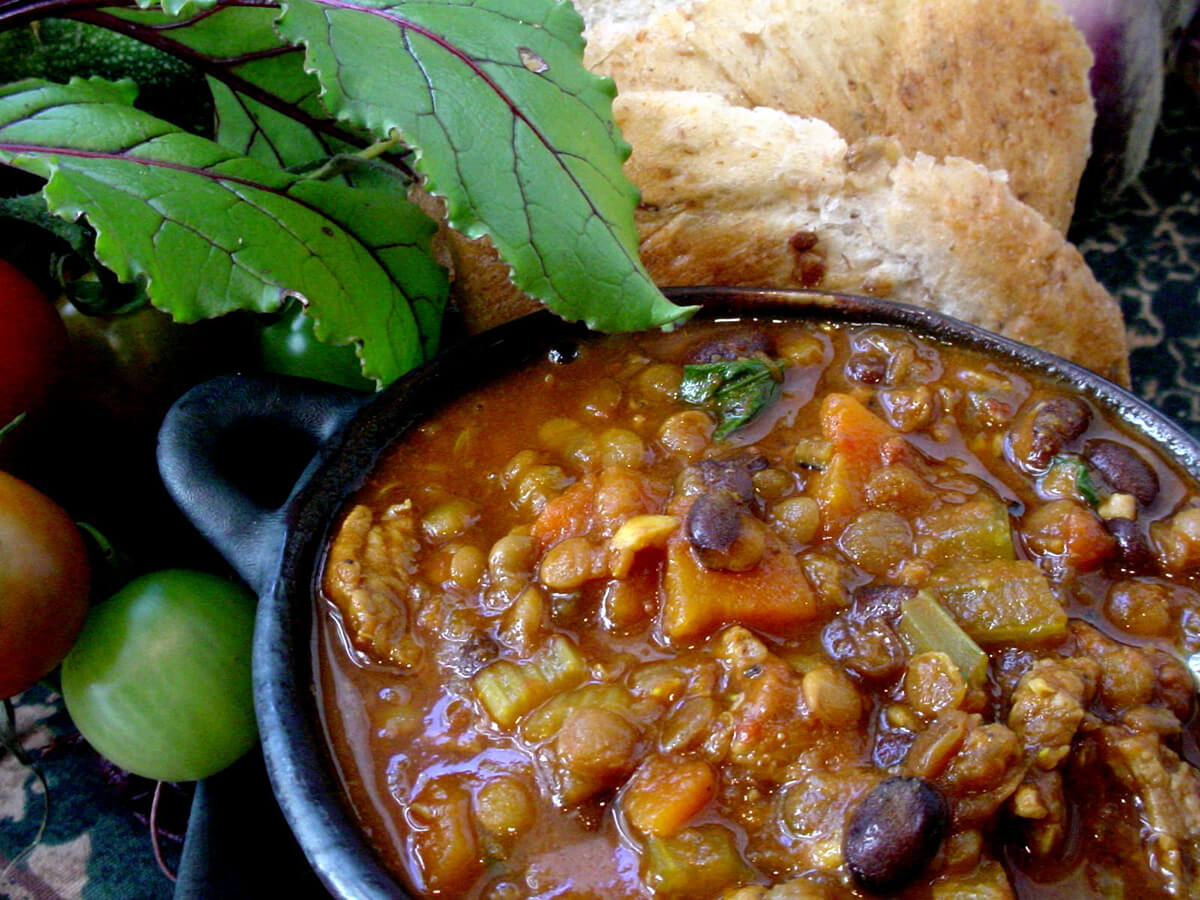
Mechoui, the Slow-Roasted Festive Dish
The traditional Moroccan festive dish, Mechoui, is primarily served during the New Year or the Feast of Sacrifice, which is 50 days after the end of Ramadan. This specialty requires extensive preparation, as it involves roasting a young lamb or mutton in a special clay oven over glowing charcoal.
The animal is skinned, gutted, rubbed with spices, garlic, onions, Smen, fermented butter, and salted. Once the oven reaches the right temperature, the lamb is hung on a spit in the clay oven and slowly roasted for five to six hours.
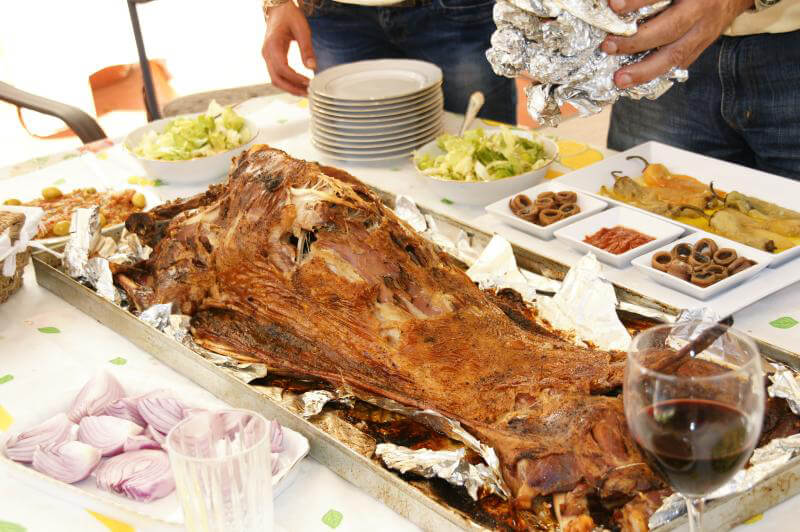
Tanjia, a Specialty from Marrakech
Another typical Moroccan specialty is Tanjia, which has its roots in Marrakech. It mainly consists of braised beef or lamb, gently cooked in the embers of a large oven, often a hammam oven. Essentially, it is the same dish as Mechoui but on a smaller scale. Instead of a whole animal, Tanjia typically uses only a shoulder or leg placed in a clay amphora.
Ingredients, like preserved lemon, onion, salt, and pepper, are added to the amphora, which is then sealed and placed over the fire or glowing charcoal. After cooking for hours, they open it.
Tanjia was particularly popular among workers in the past. They would bring a prepared amphora to work, place it on a fire, and enjoy the hearty meat after a day’s work. The tradition of this Moroccan dish has persisted to this day. People in various regions of Morocco continue to enjoy Tanjia, with local variations and special preparations contributing to culinary diversity.
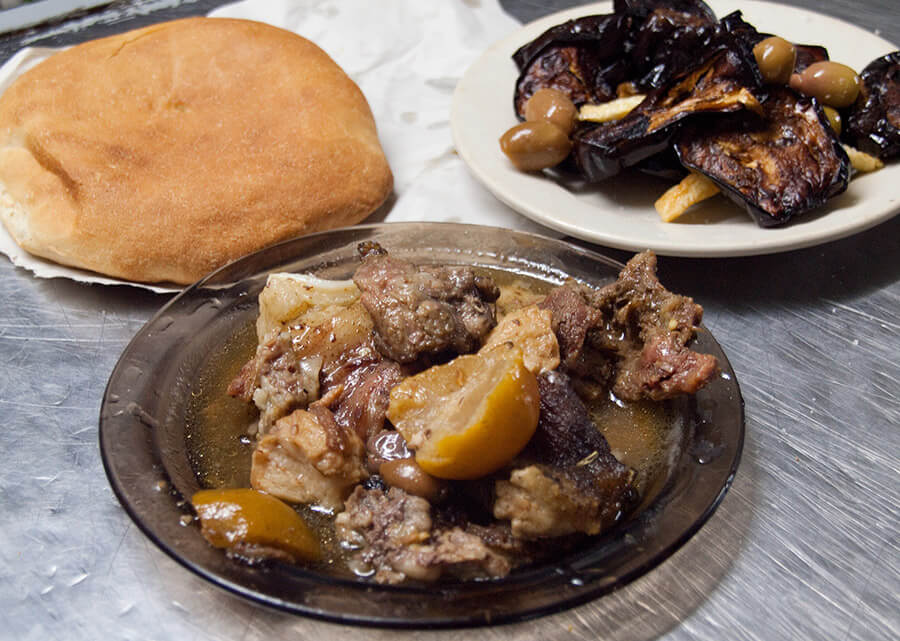
B’stilla, the Sweet and Savory Temptation
This delicious Moroccan festive dish is made of thin layers of dough and originates from the Fes region. The harmonious blend of sweet and savory flavors characterizes it. Traditionally, B’stilla filling consists of pigeon meat, almonds, and a spicy mixture of saffron, cinnamon, and fresh coriander. However, nowadays, chicken is frequently used for this puff pastry dish. Occasionally, you may also find variations with shrimp.
Preparing B’stilla requires a highly elaborate process. Some restaurants offer it only upon advance request to guarantee freshness and authenticity. A high-quality B’stilla costs at least 100 DH.
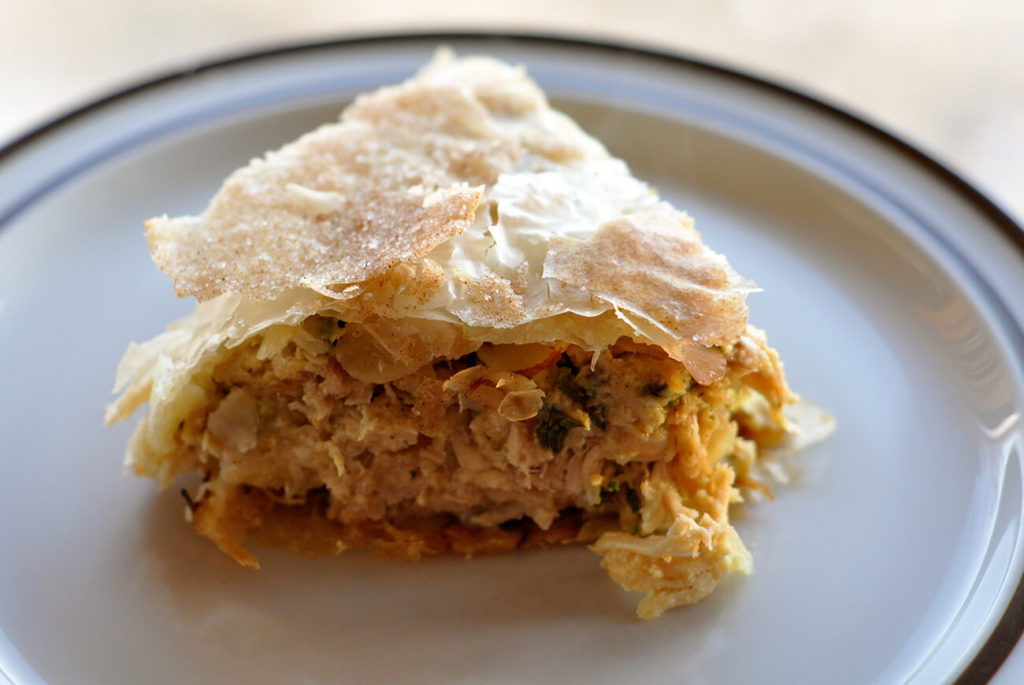
Breakfast
Simple hotels in Morocco often provide a modest or even nonexistent breakfast. Therefore, I recommend having breakfast in the numerous cafes in the Medina. Typically, breakfast includes croissants, bread, olive oil, jam, and occasionally olives or omelets. Some cafés also offer Harira soup with bread or crepes. You can usually choose between coffee, tea, or orange juice for drinks.
When trying crepes and pancakes in Morocco, you have various options. Msemen, for example, are multi-layered, fried pancakes similar to ours. A particularly entertaining and tasty alternative is Beghir, airy pancakes made from semolina dough, often enjoyed with honey, butter, or jam.
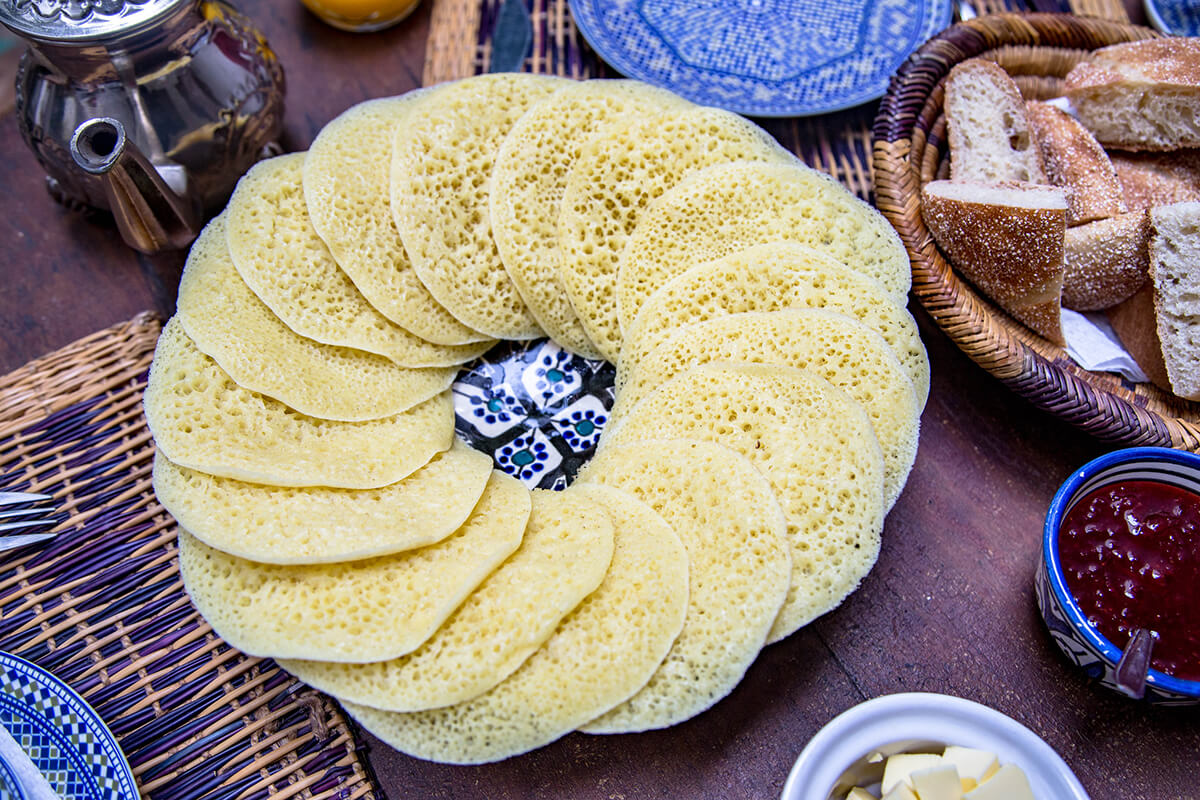
A typical breakfast in a non-touristy cafe usually costs no more than 30 DH and includes eggs, coffee, orange juice, bread, oil, and jam. You can generally get a crepe for 3-5 DH.
In raids or guesthouses, breakfast often resembles the offerings in simple restaurants and is practically always included in the accommodation price. Large international hotels offer standard breakfast buffets.
Street Food in Morocco
Street food in Morocco encompasses many snacks and dishes. This includes small kebabs, sandwiches with spicy Merguez sausages, grilled eggplants, peanuts, sunflower seeds, roasted chickpeas, or ring-shaped fried dough pieces, primarily sold in the morning.
Some small shops specialize in soups, selling them in bowls throughout the day. You can often spot them quickly by a stack of soup bowls at the entrance. In addition to Harira is a thick pea soup called Bisara, eaten with olive oil, particularly for breakfast.
Many places don’t have a menu or a board written in Arabic. Small restaurants are usually open for lunch from 12 to 3 PM and in the evening from 7 to 11 PM, although more affordable places may also be available in the morning and between.
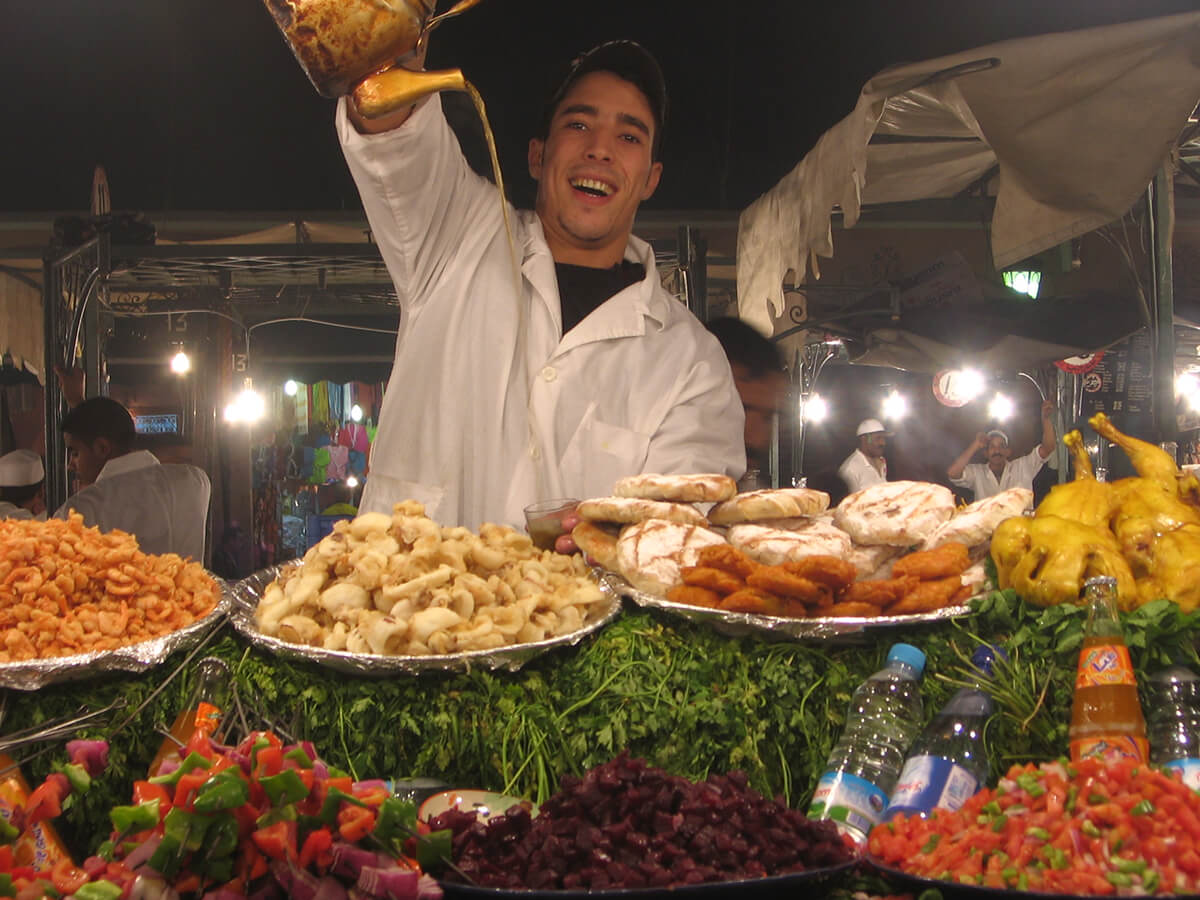
Eating with Hands in Morocco
Using hands instead of knives and forks is standard when dining in local cafes or private invitations. Especially among Muslims, eating is done exclusively with the right hand, as the left hand is considered impure and reserved for toilet hygiene. Therefore, using only your right hand while eating (and greeting) is advisable.
In utensil-free dining, you can hold the flatbread between your fingers and use your thumb as a spoon. When sharing a communal plate at someone’s home, taking only the meat directly before you is polite unless the host explicitly offers you a piece of meat.
Vegetarian and Vegan Food in Morocco
Understanding of vegetarianism is limited in the majority of Morocco’s regions. Some restaurants now acknowledge the needs of tourists but often offer seemingly vegetarian options that, in reality, are meatless variations of regular dishes. In such instances, the cooks might remove the meat pieces from Tajines or Couscous dishes, resulting in a dish that appears vegetarian but has contact with a meat broth. Indeed, vegetarian tajines or couscous dishes are relatively rare, especially outside tourist cities, and finding one can be challenging.
If you’re unsure, asking or avoiding such dishes explicitly is better. You can say, “Je suis végétarien/végétarienne” in French, meaning “I am vegetarian”. However, there’s a possibility that somebody does not fully understand your request. To prevent misunderstandings, you could add: “Je ne mange aucune sorte de viande (ni poisson)”, which means you don’t eat any meat (or fish).
In larger cities like Marrakech, there are now explicit vegetarian restaurants. Pizza is usually available there as well. Otherwise, vegetarian options on the menu are limited and often restricted to fries, omelets, and sandwiches. However, street food vendors increasingly offer good falafel dishes and occasionally vegetarian or vegan options like stuffed Briouats, grilled eggplants, or olives. This selection of alternatives noticeably diminishes away from major cities.
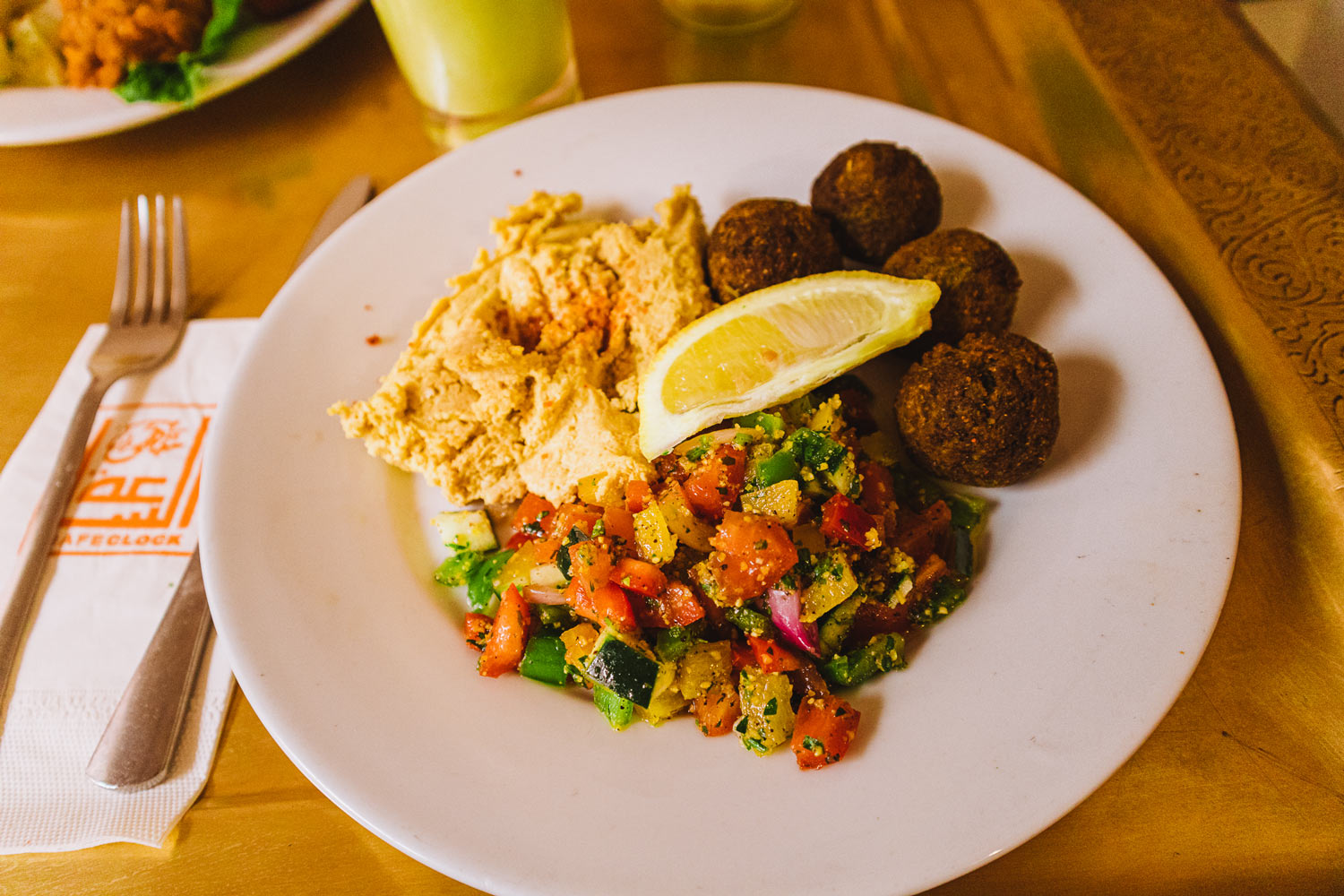
As a vegetarian in Morocco, you may face challenges during private invitations, as hosts might not understand that you don’t eat meat. It’s a balance between politeness and dietary discipline. Picking vegetables from a tajine without touching the meat is acceptable. However, your hosts could interpret your rejection of a dish as the chef’s criticism.
For dessert, fruits from the orchard
Morocco offers a fantastic variety of seasonal fruits. In addition to various dates available throughout the year, fruits, such as grapes, melons, apples, bananas, strawberries, pomegranates, peaches, and figs, are abundant. It is advisable to wash the fruit thoroughly before consumption.
For refreshing drinks and to relieve stomach problems, peeled cactus fruits, offered on the streets during the season for just a few Dirhams, are recommended.
Coffee, Mint Tea, Alcohol, and Other Drinks in Morocco
Various delicious freshly squeezed juices are available in cafes and at street stands in Morocco, including orange juice, almond milk, banana, avocado, or apple milkshakes. A famous mixed fruit milkshake with raisins is called ‘Asir Panaché.’
Coffee, either noir (black), cassé (with a splash of milk), or au lait (with a lot of milk), is best enjoyed in French-inspired cafes. Instant coffee is primarily known as Nescafé in Morocco. The standard tea bags for black tea are from Lipton. For tea lovers or those with stomach issues, ‘Louisa,’ a Moroccan lemon verbena, is often recommended in the Souk.
In addition to the usual soft drinks like Coca-Cola, Fanta, and Sprite, Moroccan sodas and tonic or Schweppes are widespread and available in almost every shop or snack stand.
Although Moroccan tap water is usually chlorinated and drinkable, stocking up on bottled water is advisable. Morocco has different brands of mineral water, such as Sidi Harazem or Sidi Ali.
Famous Mint Tea in Morocco: Thé à la Menthe
The renowned mint tea in Morocco is also known as Thé à la Menthe or ‘Moroccan Whiskey.’ You will encounter this drink in Morocco almost everywhere. The national beverage is a traditional welcome drink that symbolizes Moroccan hospitality. The delightful blend of green tea, mint leaves, and sugar, often from a sugar cone, gives the tea its unique flavor and revives weary spirits.
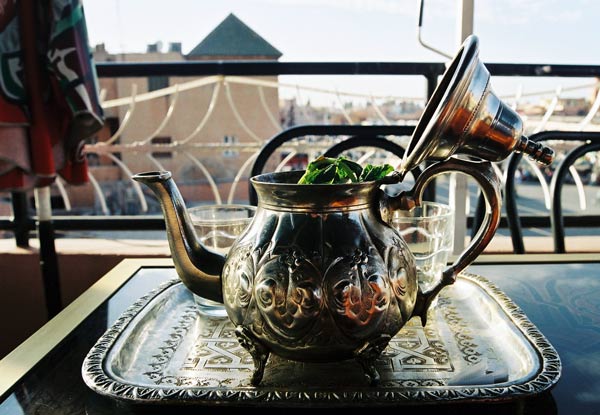
Preparing mint tea is complex and requires a ceremony to unfold its full taste. Place about half a handful of green tea leaves, usually Chinese Gunpowder, in a teapot and pour slightly boiling water over them to achieve an excellent tea. Pour off the water after a few seconds. Repeat this process twice until the tea is clean and swollen. Then, fill the pot with boiling water up to the rim, add a child’s fist-sized piece of sugar, and cook it several times. Finally, serve the tea.
People in Morocco commonly use small glasses to enjoy mint tea, pouring the tea from a great height. This process creates foam and introduces air into the tea, positively influencing its taste.
Alcohol in Morocco
Moroccan society stigmatizes the consumption of alcohol, even though Islam does not explicitly prohibit it. Public consumption of alcohol is strictly taboo. If Moroccans drink at all, it usually happens in private or in closed establishments. Bars and restaurants must acquire an expensive liquor license to serve alcohol, so most simpler restaurants do not have alcohol on their menus. Purchasing alcohol in the old quarters of cities is usually not possible; instead, specialized liquor stores and supermarkets offer alcohol.
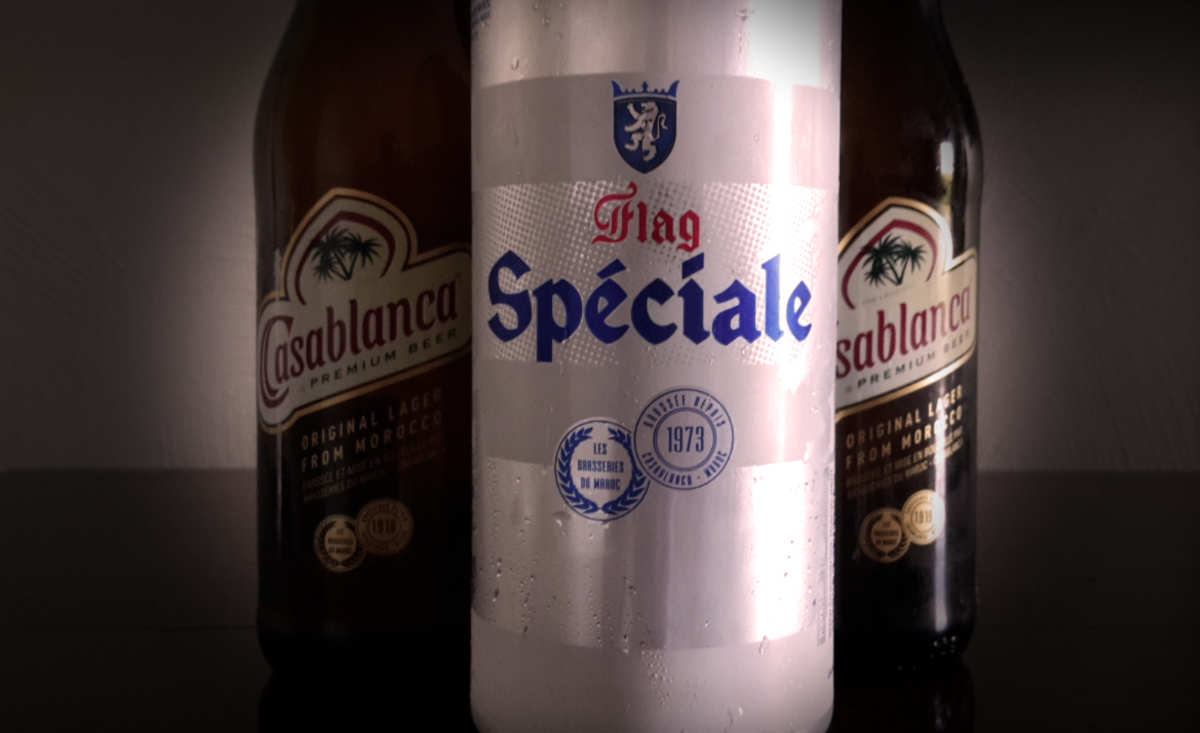
While alcohol consumption doesn’t play a prominent role in Moroccan daily life, the Romans originally introduced a Moroccan winemaking tradition. Some excellent wines come from the Meknes region but are mainly available in upscale restaurants and some bars. In addition to wine, beer is also available in Morocco. Common Moroccan brands include Stork, Flag, Flag Speciale, and Casablanca. These beers are acceptable but may not leave a lasting impression. Heineken, the most popular foreign beer brand, is produced under license in Morocco.

